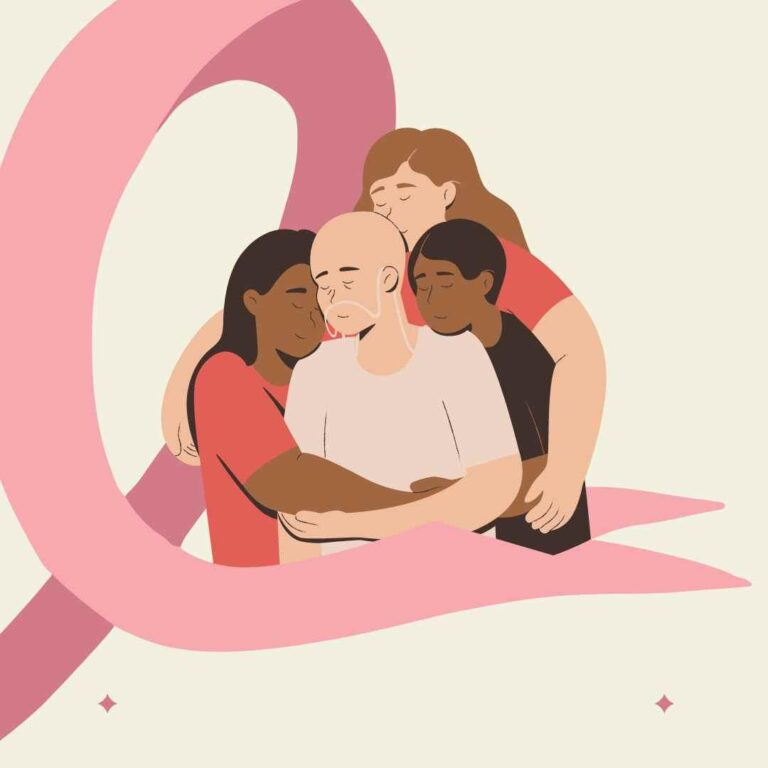Navigating the complexities of breast cancer involves addressing not only the physical health implications but also the profound impact on one’s outward appearance. Reconstructive Surgery for Breast Cancer The alterations resulting from breast cancer treatment can significantly influence body image, prompting individuals to grapple with changes they may not have anticipated. In this context, reconstructive surgery emerges as a pragmatic aspect of the cancer recovery process. It goes beyond aesthetics, playing a pivotal role in restoring a sense of normalcy and aiding individuals in their journey toward physical and emotional healing. Understanding the importance of reconstructive surgery is essential in setting the stage for informed decision-making and empowerment. It provides individuals with the tools to make choices that align with their values and preferences, fostering a sense of control in a challenging and transformative period of their lives.
Types of Reconstructive Surgery
There is different timing for breast reconstructive surgery:
Immediate: Happens during the same surgery as the mastectomy.
Delayed: Occurs at a later time, allowing flexibility in timing.
There are also different types of reconstruction:
Implants: Uses silicone or saline-filled devices to recreate breast shape.
Autologous Tissue Reconstruction: Uses the patient’s own tissue from elsewhere in the body.
The timing and types of breast reconstructive surgery offer individuals facing breast cancer a range of options tailored to their preferences and circumstances. Immediate reconstructive surgery takes place concurrently with the mastectomy, providing a seamless transition in a single surgical session.
On the other hand, delayed reconstruction offers flexibility, allowing individuals to choose a later time for the procedure. Providing them with time for recovery and decision-making. In terms of reconstruction techniques, individuals can opt for implants. Involving the use of silicone or saline-filled devices to recreate the shape of the breast. Alternatively, autologous tissue reconstruction utilizes the patient’s own tissue from different parts of the body, offering a natural and personalized approach to rebuilding the breast.
This diversity in timing and reconstruction methods empowers individuals to make choices that align with their unique preferences and medical considerations, contributing to a more personalized and patient-centered approach in their breast cancer recovery journey. We actually have a section of our Manta Planner that reminds you to write down what you are grateful for.
READ MORE : What To Eat To Increase Sperm Count And Motility
Emotional and Psychological Considerations
Navigating the psychological and emotional terrain of breast cancer reconstructive surgery involves addressing two key considerations: coping with changes in body image and addressing anxiety and expectations. For many individuals, the alterations to their physical appearance can be emotionally challenging. Coping with these changes entails fostering self-acceptance and seeking support from healthcare professionals, friends, and family. It’s about embracing a transformed self with resilience. Additionally, the anticipation of surgery may trigger anxiety and varied expectations. Open communication with healthcare providers plays a crucial role in managing these emotions. Addressing concerns and setting realistic expectations pave the way for a smoother emotional journey. Allowing individuals to approach breast cancer reconstructive surgery with a sense of empowerment and mental well-being.
Alternative Options and Non-Surgical Approaches
For those who opt not to undergo breast reconstructive surgery, there are alternative options that cater to individual preferences. Prosthetics and external breast forms offer a flexible choice, allowing individuals to decide the level of intervention that aligns with their comfort and lifestyle. These external alternatives provide a semblance of symmetry and shape without the need for surgical procedures. Additionally, scar management techniques and tattooing serve as non-surgical approaches to address the aesthetic aspects of breast cancer treatment. Scar management involves the use of creams and massage to minimize the visibility of surgical scars. While tattooing can recreate realistic areolas, contributing to an overall natural appearance. These alternatives provide individuals with diverse choices, empowering them to make decisions that align with their comfort and desired outcomes.
Personal Stories of Reconstruction
Every person undergoing surgery for breast cancer and choosing the type of reconstructive surgery (or choosing to forego surgery) is a very individual choice. After my own bilateral mastectomy in 2011, I chose to have silicon implants placed. For me, it made the mental shift from my “real” breasts to their removal much easier both physically and mentally. I have many friends, however, who chose to “go flat” and not do any reconstruction after a mastectomy. There is no right or wrong way to go through the reconstruction process.
Empowering Choices and Moving Forward
In conclusion, the journey through breast cancer and reconstructive surgery is deeply personal, marked by resilience, choices, and the pursuit of healing. Reconstructive surgery stands as a beacon, not merely as a cosmetic procedure but as a transformative force aiding individuals in their quest for physical and emotional restoration. Understanding the diverse types of reconstructive surgery, from immediate to delayed procedures and implants to autologous tissue reconstruction, provides a roadmap for informed decision-making tailored to individual circumstances. Navigating the emotional landscape involves addressing changes in body image and managing expectations, highlighting the importance of open communication and support networks.
Disclaimer: This blog post is for general informational purposes only and does not constitute the practice of medicine, nursing or other professional health care services, including the giving of medical advice, and no doctor/patient relationship is formed. The use of information on this blog or materials linked from this blog is at the user’s own risk. The content of this blog post is not intended to be a substitute for professional medical advice, diagnosis, or treatment. Users should not disregard, or delay in obtaining, medical advice for any medical condition they may have. And should seek the assistance of their health care professionals for any such conditions. Our team at Manta Cares has been there. We are survivors and caregivers, ourselves. We have a podcast that shares experiences and insights from people who have been diagnosed with or cared for someone with cancer
